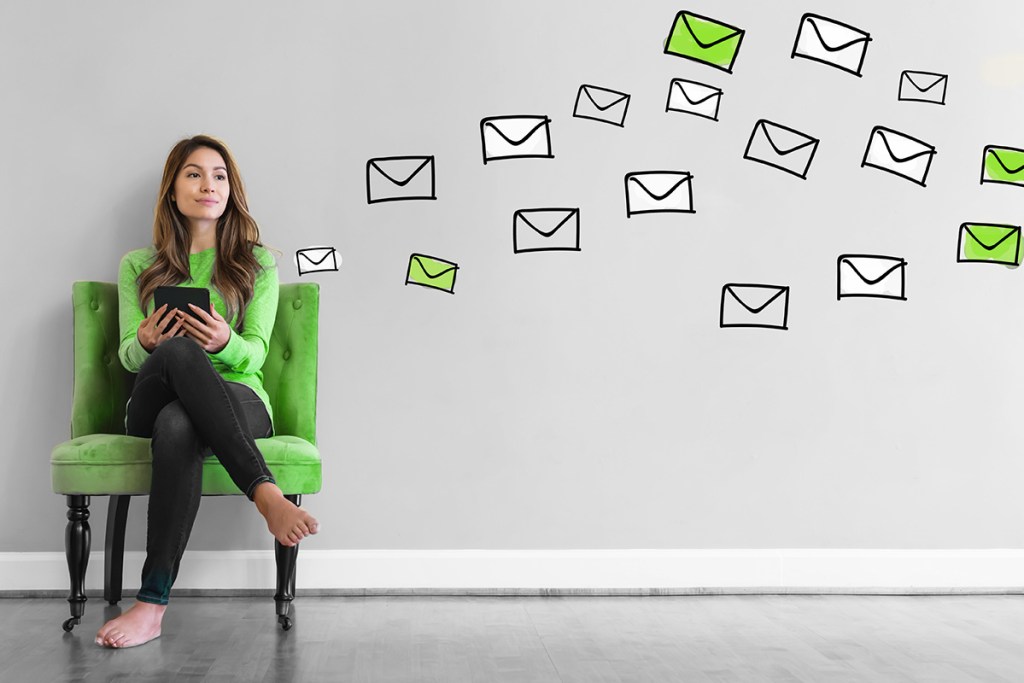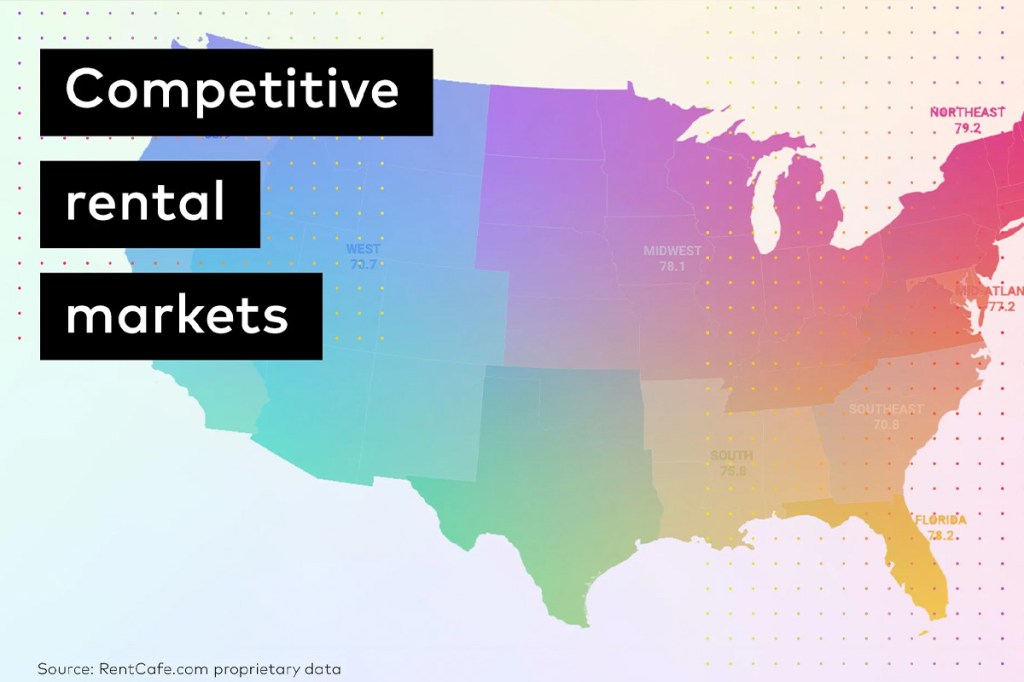
In the competitive landscape of property management, effective communication is your edge. It’s not just about sending emails. It’s about standing out and building trust. With tools like Yardi Breeze, you can differentiate yourself from competitors, engage prospects and foster lasting relationships with current renters. These email tips unveil key strategies to optimize your outreach, ensuring you’re not just heard, but remembered. Use these practical email tips to help you master the art of property management.
1. Send bulk emails to save crazy amounts of time
If you’re sending emails to residents one at a time, you’re likely wasting time and making follow-up more tedious than it needs to be. Property managers need the ability to send bulk emails with software that lets them:
- Add attachments
- Preview the email before sending it
- Create and save custom email templates
- Send one email to multiple tenants (with different attachments)
Let’s go over that last email feature. Let’s say you want to email multiple unit occupants in one message and you want to include different attachments (e.g., separate invoices) per tenant or resident. Breeze and Breeze Premier make it easy to write one message and send the appropriate documents to each occupant.
For email communication with no attachments (or just one attachment for all tenants), select Reporting, Correspondence, then Email Messaging. From there, you can quickly select tenants, choose an email template, etc.
2. Use an integrated calendar to schedule task notifications via email
The right property management software makes it easy to connect with users who share your account, allowing you and your staff to:
- Add a task to the calendar, assign it to a user and have the software notify the user via email
- Add a task from another screen and still notify the user via email
- Change the calendar display: see one month at a time or one week at a time
- Tell the calendar to show all activities or only the ones that have been assigned to you (other users can do the same)
3. Unleash your most powerful subject lines
Every day, people log in to their email accounts and look at their inbox in horror and dismay. So many junk emails! So much spam! With limited time and resources, valuable messages can get lost in the shuffle.
One way to make sure your emails stand out from the crowd is to use attention-grabbing subject lines. Short, sweet and to the point, a perfect subject line should be 60 characters or less, including spaces. If in doubt, short and to the point is better than an email subject line that doesn’t clarify its intention until the end.
Don’t forget to include compelling action phrases like “sneak peek” or even “thank you.” If possible, personalize your subject lines and keep the exclamation points to a minimum. There’s no need to shout unless you’re truly making an exclamation or saying something undoubtedly exciting.
4. Make those visuals pop
One of the most important aspects of any email campaign involves the visual appeal of every email you send. Attractive layouts can get people interested in what you have to say and be a powerful reflection of your brand.
There are plenty of free online tools available to help you create compelling emails. Campaign Monitor and Mailchimp are two examples of the many services available. These sites normally have both free and subscription options, and they offer templates and tracking tools that help simplify the email marketing process. However, they’re not necessarily tailored to the needs of property managers.
If you’re a Yardi Breeze user, you already have access to email templates you can customize and send to prospects and tenants. You don’t even need to download additional software or use a third party.
5. Imitate the best & leave the rest behind
There’s nothing wrong with copying others’ marketing approaches. Do what works. That often means seeing what others have done, understanding why it worked and replicating their successful campaigns. Keep an eye on competitors and study how others in the industry reach out to their audience. However, you don’t have to limit yourself to one industry or market. Pay attention to any emails that attract your attention and copy those tactics.
In a sea of boring business emails, you may want to experiment with some lighthearted content. For example, a refreshing change of pace might include a countdown or list. Perhaps a “Top 10” list or “3 Dos and Don’ts” is in order. Stand out by keeping your copy light and easy to read.
6. Spellcheck everything
None of us are perfect, but when it comes to contacting your clients via email, you want to put your best foot forward. That includes content that’s checked for typos, grammatical errors and spelling.
A service like Grammarly is a good option if you feel your copy-editing skills could use help. Even Microsoft Word can help you catch some common mistakes. You can increase its editing power by enabling additional grammar and spelling options.
Of course, by now you’ve likely heard about the advances in machine learning and large language models (LLMs), most famously ChatGPT. The free version is very good, and the paid Plus version ($20/month as of August 2023) is even better.
Fun fact: ChatGPT wrote the introduction to this article (and we barely had to make any edits). That’s how powerful of a tool it can be.
7. Stop stressing about spam
You may have heard that certain trigger words in email subject lines get flagged as spam. In the past, words like “free” and “act now” could automatically send your email straight to a spam folder. This is no longer the case. Spam filters are much more sophisticated than they used to be. Your message is not going to make it into a spam folder simply because of your subject line. Emojis, exclamation points and the word “free” are all safe to use.
Still, in many marketing circles today, those who remember the “old days” of the internet hang on to these outdated beliefs out of an abundance of caution. Ironically, this could be hurting your email campaigns. The words and icons that used to be spam triggers are now used by professional marketers to make email content more engaging and likely to be read.
Not sure what words and emojis work for your audience? These email tips are just the tip of the iceberg. Go ahead and test different combinations to see what works.
8. Automate campaigns for less stress
Once you have one or two email templates created, a drip email campaign is a great way to initiate contact and stay in touch with prospective residents. Campaigns can be scheduled to go out daily, weekly, monthly or on any timetable you select, and you can customize everything from the salutation to the closing and all the content in between. HubSpot, Campaign Monitor, Mailchimp, and of course, Yardi Breeze all provide email automation options.
9. Keep them talking so they can’t look away
A good email campaign can mean more work for you … but that’s a good thing. If you’ve done everything just right, many of your contacts will open your email and take action.
When you’re trying to lease a unit, it’s important to keep the conversation going. A little preparation ahead of time can garner big results in the long run.
- Create templates that address some of the most common questions you receive
- Include a few blank fields for easy insertion of details
- Send a personalized version of a common response
- Sift through your sent folder to get an idea of which replies work best for you
- Use cloud-based property management software to create standard templates that eliminate extra effort on your end
10. So long, farewell, sayonara! (Include a memorable signoff)
An email signature is not just a way to finish your message. Used right it can be yet another way to promote your business. An effective email signature should include your:
- Name and position
- Contact information
- Website address
- Preferred social media account(s)
Many email services allow you to add graphics to your email signature, so consider adding a logo or headshot. Consider adding a resident testimonial as well. A great signature helps you stand out from competitors and cement a positive first impression.
11. Take email marketing to the next level
Once you’ve improved your general email marketing strategies, you might be ready to branch out into some email activities that require a little more planning. While this might require extra effort, doing so can also trigger a bigger payoff.
One option: create a community newsletter. When deciding what content to include, remember that your newsletter shouldn’t simply focus on the specifics of your business. It should add value to your contacts. An effective newsletter should provide your customers with insight and information about local and national real estate market news and trends.
An email newsletter doesn’t have to be complicated. You can link to your top blog posts as well as any news items you think would be of interest to your tenants and prospects. If you’ve recently hosted an event or received a great testimonial, a newsletter is a perfect place to show it off.
12. Know when email isn’t the best choice
Wondering when you should email your tenants and when you should text or call instead? Renter communications can be tricky, but we’ve got some tips that will help you choose the right delivery method.
Always use email to share important news
Still printing and posting flyers like it’s 1999? This is not only a waste of your time, not to mention paper, but also an unreliable way to get your message across. How do you know your flyer didn’t get swept up, torn down or thrown away before it was seen?
When you want to alert your tenants to property improvements, water shutdowns and community events, it just makes sense to send an email. It’s quick, efficient and saves you and your tenants from miscommunications. (There are exceptions, such as during an emergency when text or a phone call are more appropriate.) Plus, it’s always a good idea to have all your business correspondence documented and saved for future reference.
According to one NMHC Renter Preferences Study, 89% of renters said email is their preferred way to receive information from management. When your residents see an email from you, it’s very likely they will open it.
For the most effective communication, follow these best practices:
- Make sure you get residents’ email addresses during lease signing and set clear expectations for property communications
- Use spell check and avoid jokes that could be misunderstood in writing
- Always invite the reader to reply or contact you by phone or text if they have any questions
- Save yourself time using email templates for messages you need to send frequently
- Don’t email too often (e.g., every day is too often)
Sometimes use email to ask for or offer help
It can be a good idea to occasionally reach out to your tenants with requests or helpful tips. For example, you may want to encourage your tenants to review your properties online. Or you might be informing them of a bulky trash or electronic waste pickup day. In these cases, it’s fine to email. Just make sure you don’t do it so often that your more important messages are ignored.
If this is something you’re worried about, consider texting your renters instead. These six do’s and don’ts of texting for property managers will help you get results.
Never use email when you have bad news (unless it’s a rent increase discussion)
If you have bad news to deliver or a sensitive topic to discuss, it’s time to pick up the phone. Never email bad news, because it could come across as curt or uncaring without the sound of a human voice. Was there a complaint from another tenant? An issue with a pet? Be courteous and give them a call instead.
You can always follow up with an email to recap and document the conversation. This way, you’re keeping a better record of violations, conflicts, etc.
In some cases, you do have to deliver unwelcome news in writing. For instance, rent increase letters need to be delivered in writing. That means via paper, email or both. Likewise, it’s important to consider that other notices have legal implications. For example, when it comes to pay or quit messages, be sure to deliver those in a way that meets the requirements in your area.
So, which of these email tips will you try first? There’s no rush. Start where it makes sense for you and have some fun with it! Your community will appreciate the extra effort.



